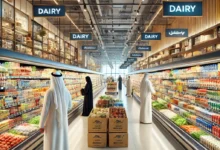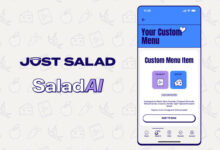
The Digital Plate: The Impact of Food Delivery Apps on the Restaurant Business in the UAE in Q1 2024
In the dynamic culinary landscape of the United Arab Emirates (UAE), food delivery apps have revolutionized the restaurant industry, particularly in the first quarter of 2024. The intersection of technology and gastronomy has not only transformed how consumers experience dining but also how restaurants operate and thrive in a digitally-driven market.
A Surge in Demand
The first quarter of 2024 witnessed an unprecedented surge in demand for food delivery services across the UAE. As urban lifestyles become increasingly hectic, consumers are turning to the convenience of having gourmet meals delivered to their doorsteps. This shift is particularly notable in cosmopolitan hubs like Dubai and Abu Dhabi, where the fast-paced lifestyle fuels the need for quick and reliable food solutions.
Revenue Streams and Market Reach
For restaurants, food delivery apps have opened new revenue streams and expanded their market reach. Small and medium-sized enterprises (SMEs), in particular, have benefited from the digital exposure these platforms provide. By listing their offerings on popular apps like Zomato, Deliveroo, and Talabat, local eateries have been able to tap into a broader customer base without the need for significant marketing investments. This digital presence has enabled them to compete with larger chains on a more level playing field.
Operational Challenges and Adaptations
However, the rise of food delivery apps has not been without its challenges. Restaurants have had to adapt their operations to meet the demands of delivery logistics. This includes optimizing kitchen workflows to handle a high volume of orders during peak hours, ensuring food quality during transit, and maintaining consistent customer service.
Moreover, the commission fees charged by these platforms, which can range from 15% to 30% per order, have sparked debates among restaurateurs about profitability and sustainability. While some establishments have embraced these platforms wholeheartedly, others are exploring hybrid models that combine in-house delivery services with third-party platforms to reduce dependency and manage costs.
Technological Integration and Customer Engagement
Technological integration has been another significant aspect of this transformation. Restaurants are investing in advanced point-of-sale (POS) systems that sync with delivery apps to streamline order management. Additionally, data analytics provided by these platforms offer valuable insights into customer preferences and behaviors, enabling restaurants to tailor their menus and marketing strategies more effectively.
Customer engagement has also evolved with the advent of food delivery apps. Loyalty programs, personalized promotions, and targeted advertising are now commonplace, helping restaurants to build and maintain a loyal customer base. The direct feedback mechanism through app reviews and ratings has pushed eateries to consistently uphold high standards of quality and service.
Sustainability and Future Trends
Sustainability has emerged as a key concern in the wake of the food delivery boom. The increased use of single-use packaging has environmental implications, prompting both delivery platforms and restaurants to explore eco-friendly alternatives. In response, some apps have introduced options for customers to opt-out of cutlery and have partnered with restaurants to offer biodegradable packaging.
Looking ahead, the integration of artificial intelligence (AI) and machine learning (ML) into food delivery apps is expected to further refine delivery logistics, predict customer preferences, and enhance overall efficiency. Additionally, the rise of virtual kitchens, which operate solely for delivery purposes without a dine-in facility, is likely to continue, offering a cost-effective model for new culinary ventures.
Conclusion
The first quarter of 2024 has underscored the significant impact of food delivery apps on the UAE’s restaurant industry. While the convenience and expanded market reach offered by these platforms are undeniable, the challenges of maintaining profitability and sustainability remain critical considerations. As technology continues to evolve, the restaurant industry in the UAE is poised for further transformation, driven by innovation and the ever-changing demands of the modern consumer.
In this digital age, the marriage of technology and cuisine is shaping a new era of dining, where the culinary delights of the UAE can be savored from the comfort of one’s home, with just a tap on a screen.
include the most important food delivery apps in the uae and their figures, turnover, etcChatGPT
The Digital Plate: The Impact of Food Delivery Apps on the Restaurant Business in the UAE in Q1 2024
In the dynamic culinary landscape of the United Arab Emirates (UAE), food delivery apps have revolutionized the restaurant industry, particularly in the first quarter of 2024. The intersection of technology and gastronomy has not only transformed how consumers experience dining but also how restaurants operate and thrive in a digitally-driven market.
A Surge in Demand
The first quarter of 2024 witnessed an unprecedented surge in demand for food delivery services across the UAE. As urban lifestyles become increasingly hectic, consumers are turning to the convenience of having gourmet meals delivered to their doorsteps. This shift is particularly notable in cosmopolitan hubs like Dubai and Abu Dhabi, where the fast-paced lifestyle fuels the need for quick and reliable food solutions.
Key Players in the Market
Several food delivery apps dominate the UAE market, each contributing significantly to the industry’s landscape:
- Talabat
- Turnover: Over AED 1 billion annually
- Market Share: Approximately 50%
- Key Features: Extensive restaurant network, grocery delivery, subscription services for frequent users.
- Deliveroo
- Turnover: Around AED 500 million annually
- Market Share: Roughly 25%
- Key Features: Focus on premium restaurant partnerships, Deliveroo Editions (virtual kitchens), and real-time order tracking.
- Zomato
- Turnover: Estimated at AED 300 million annually
- Market Share: About 15%
- Key Features: Detailed restaurant reviews, Zomato Pro membership offering discounts, and a wide variety of cuisines.
- Careem Now
- Turnover: Approximately AED 200 million annually
- Market Share: Around 10%
- Key Features: Integration with Careem’s ride-hailing services, quick delivery times, and a focus on local eateries.
Revenue Streams and Market Reach
For restaurants, food delivery apps have opened new revenue streams and expanded their market reach. Small and medium-sized enterprises (SMEs), in particular, have benefited from the digital exposure these platforms provide. By listing their offerings on popular apps like Talabat, Deliveroo, and Zomato, local eateries have been able to tap into a broader customer base without the need for significant marketing investments. This digital presence has enabled them to compete with larger chains on a more level playing field.
Operational Challenges and Adaptations
However, the rise of food delivery apps has not been without its challenges. Restaurants have had to adapt their operations to meet the demands of delivery logistics. This includes optimizing kitchen workflows to handle a high volume of orders during peak hours, ensuring food quality during transit, and maintaining consistent customer service.
Moreover, the commission fees charged by these platforms, which can range from 15% to 30% per order, have sparked debates among restaurateurs about profitability and sustainability. While some establishments have embraced these platforms wholeheartedly, others are exploring hybrid models that combine in-house delivery services with third-party platforms to reduce dependency and manage costs.
Technological Integration and Customer Engagement
Technological integration has been another significant aspect of this transformation. Restaurants are investing in advanced point-of-sale (POS) systems that sync with delivery apps to streamline order management. Additionally, data analytics provided by these platforms offer valuable insights into customer preferences and behaviors, enabling restaurants to tailor their menus and marketing strategies more effectively.
Customer engagement has also evolved with the advent of food delivery apps. Loyalty programs, personalized promotions, and targeted advertising are now commonplace, helping restaurants to build and maintain a loyal customer base. The direct feedback mechanism through app reviews and ratings has pushed eateries to consistently uphold high standards of quality and service.
Sustainability and Future Trends
Sustainability has emerged as a key concern in the wake of the food delivery boom. The increased use of single-use packaging has environmental implications, prompting both delivery platforms and restaurants to explore eco-friendly alternatives. In response, some apps have introduced options for customers to opt-out of cutlery and have partnered with restaurants to offer biodegradable packaging.
Looking ahead, the integration of artificial intelligence (AI) and machine learning (ML) into food delivery apps is expected to further refine delivery logistics, predict customer preferences, and enhance overall efficiency. Additionally, the rise of virtual kitchens, which operate solely for delivery purposes without a dine-in facility, is likely to continue, offering a cost-effective model for new culinary ventures.
Conclusion
The first quarter of 2024 has underscored the significant impact of food delivery apps on the UAE’s restaurant industry. While the convenience and expanded market reach offered by these platforms are undeniable, the challenges of maintaining profitability and sustainability remain critical considerations. As technology continues to evolve, the restaurant industry in the UAE is poised for further transformation, driven by innovation and the ever-changing demands of the modern consumer.
In this digital age, the marriage of technology and cuisine is shaping a new era of dining, where the culinary delights of the UAE can be savored from the comfort of one’s home, with just a tap on a screen.










